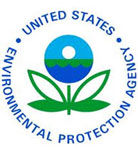Agriculture Wins One with the EPA
Posted: April 11, 2012
Despite the increasing pressure on farming from over-regulation, agriculture was handed a victory this week by the Environmental Protection Agency (EPA) as the agency denied a 2008 petition by the Natural Resources Defense Council (NRDC) seeking to cancel 2,4-D herbicide registrations and revoke all tolerances for use.
 According to the agency, “EPA evaluated all the data cited by NRDC and new studies submitted to EPA in response to the reregistration decision. Included in the new studies is a state-of-the-science extended one-generation reproduction study. That study provides an in-depth examination of 2,4-D’s potential for endocrine disruptor, neurotoxic, and immunotoxic effects. This study and EPA’s comprehensive review confirmed EPA’s previous finding that the 2,4-D tolerances are safe.”
According to the agency, “EPA evaluated all the data cited by NRDC and new studies submitted to EPA in response to the reregistration decision. Included in the new studies is a state-of-the-science extended one-generation reproduction study. That study provides an in-depth examination of 2,4-D’s potential for endocrine disruptor, neurotoxic, and immunotoxic effects. This study and EPA’s comprehensive review confirmed EPA’s previous finding that the 2,4-D tolerances are safe.”
In the decision, EPA noted that based on “studies addressing endocrine effects on wildlife species and the adequacy of personal protective equipment for workers, the Agency concluded that the science behind our current ecological and worker risk assessments for 2,4-D is sound and there is no basis to change the registrations.”
 “The impact of this decision should not be understated,” said Jim Gray, executive director of the Industry Task Force II on 2,4-D Research Data. “This has been one of the most widely used and successful herbicides in history and growers along with other users around the U.S. and the world can continue to use it with confidence.”
“The impact of this decision should not be understated,” said Jim Gray, executive director of the Industry Task Force II on 2,4-D Research Data. “This has been one of the most widely used and successful herbicides in history and growers along with other users around the U.S. and the world can continue to use it with confidence.”
The original patent for 2,4-D - a phenoxy herbicide and plant growth regulator - was issues in 1945 and today it is one of the most widely used herbicides in the world. It is currently found in approximately 600 products registered for agricultural, residential, industrial, and aquatic uses. It is used on a variety of crops including wheat, corn, rice, soybeans, potatoes, sugar cane, pome fruits, stone fruits and nuts. In addition, 2,4-D controls invasive species in pastures, aquatic areas and federally protected areas and broadleaf weeds in turf grass.
Right now, corn is not among the big users of 2,4-D, but that is expected to change in the future since one of its major manufacturers, Dow Chemical, has developed a 2,4-D resistant hybrid and is seeking federal approval for it. USDA is currently accepting comments on approval for that hybrid, which runs through April 27, but they are being pressured by non-agricultural interests to decline.
While this is an important victory for agricultural users of the herbicide, it is just as significant for suburban lawn care and other non-agricultural uses, such as controlling invasive plant species that pose risks to the environment. The major problem with 2,4-D is that it is perpetually linked with Agent Orange, the defoliant used in the Vietnam War. However, while it was an ingredient of Agent Orange, it is now widely believed that the main health problems came from contamination of 2,4,5-T, the other major ingredient in Agent Orange. Regardless, the link still creates a bit of an image problem.
NRDC is none too happy with EPA’s decision and may yet appeal it because the underlying agenda here is to get rid of ALL chemicals used in crop protection, no matter how safe they are. Thanks to the EPA for standing their ground this time around.


